Early this morning the Letty pulled into Punta Suarez on the island of Espanola. This is the motherlode of photographic targets, and we’re attacking it with a plan. Our two sisters boats, the Eric and Flamingo I are with us this morning, and we’re the only boats here. We’ve been loosely coordinating our schedules when we’re at the same site, and this morning we literally stepped onto land the minute the park opened. The nice thing about the early start and the coordination with our other boats is that we had over an hour at Punta Suarez all to ourselves. With good early morning light, to boot.
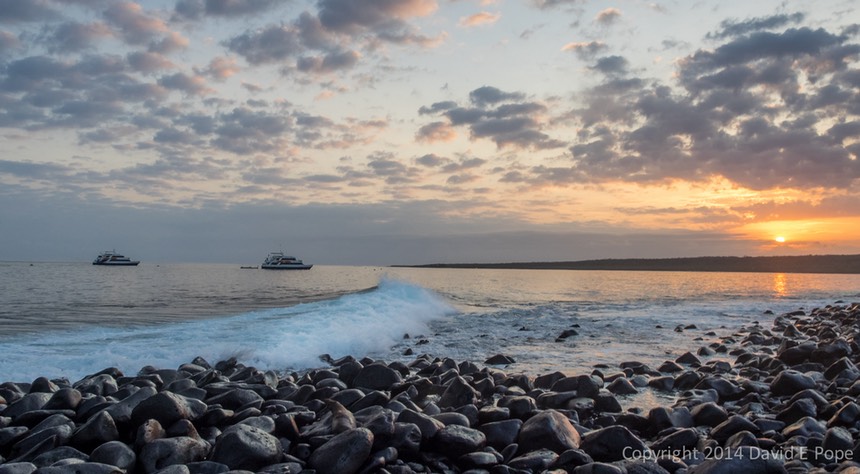
 And in that first hour, I don’t think we moved more than a 100 yards.
And in that first hour, I don’t think we moved more than a 100 yards.
Many of the male marine iguanas here are still in their Christmas colors (green and red, splashing orange). Even though mating season is over for them, a few apparently haven’t got the message to shed their colors and go back to basic black. The addition of color, of course, makes it a heck of a lot easier to photograph them. For once we’re not photographing black on black.
But this is perhaps a good time to talk about something else that should happen on a trip like this: you’ve gotten over your virginity to the place and the animals. This is a trickier subject than you might guess.
The very first time you encounter a marine iguana (or any other animal or place) you have the giddy excitement of "first discovery.” Your brain is responding to new inputs, and that’s generally a good thing. If you utilize that correctly, you can put that energy and excitement into your compositions. Most don’t, however. The temptation is to just press the darned shutter button at first encounter with a somewhat random composition. Go ahead and do that, but once that’s out of your system, you need to start using your eye/brain connection to maximize what you can do with what’s in front of you.
But we’re on what, our thousandth marine iguana this trip? The other thing sets in, too: complacency. “Oh, I’ve got a decent shot of those, I’ll look for something else.” No, no, no. You came to the Galapagos for the unique animals and environment, don’t start passing over things just because you think you’ve seen them before and have a decent shot of them. This is the thing that pros learn: there’s always a better shot, you just have to find it. Then you have to work at it. Then you have to evaluate it and work at it some more.

Now this isn’t the best marine iguana shot I’ve ever taken, not by a wide margin. But it’s a shot I took today because I was still trying to look, still trying to react to what I saw. In this particular case, it was the almost wistful look on the poor fella’s face that attracted me. That’s why I chose to crop where I did (this is within a few pixels of the full 24mp frame; in my quick post processing I took out a bit at the left where the spikes on his spine didn’t look right at the edge).
Looking at my files shows me that I got to this shot six minutes after I started shooting this fella. This is one reason why I never throw images away until after I’ve had a chance to look at them on a computer for some time; sometimes you can learn things just from the EXIF data. What was I changing? Did that work? Is there something I missed that I should have worked through some more? Your files should be full of failures. We learn best from failures, but only if we take the time to examine them and evaluate why they failed. I notice a lot of people, for example, routinely just erase missed exposures on the camera (Delete button, Delete button on the Nikons). Wait? Do you realize how many missed exposures you’ve been making? No, because you’ve erased them all and can’t count them. If I were to find that of 2000 shots I took today that 1000 of them were bad exposures, guess what I’d be working on next time I go out and shoot? Seriously, import everything into Lightroom, tag each image with your failure point, and then have Lightroom show you a summary of your failure tags.
Some suggested tags: overexposure, underexposure, missed focus, motion blur due to shutter speed, too shallow DOF, too deep DOF, tilted horizon, cut off part of subject, distracting background, distracting foreground, pokeys at edge of frame, wrong white balance, and so on.
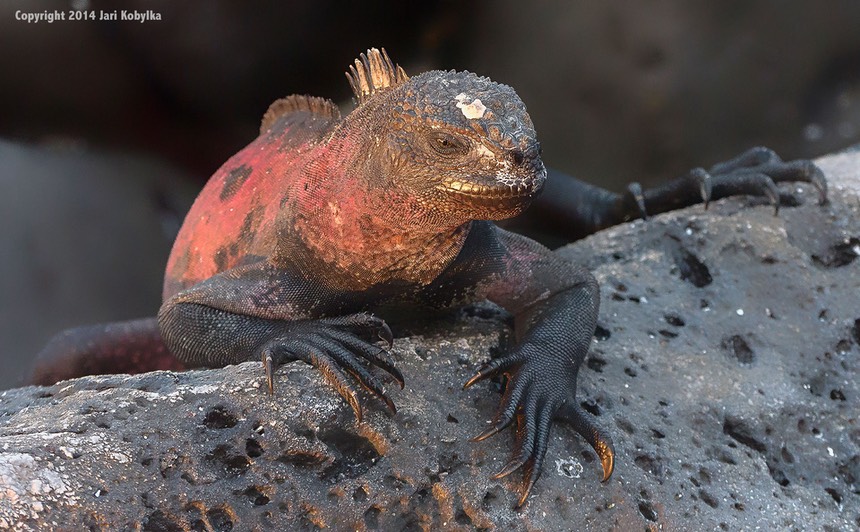
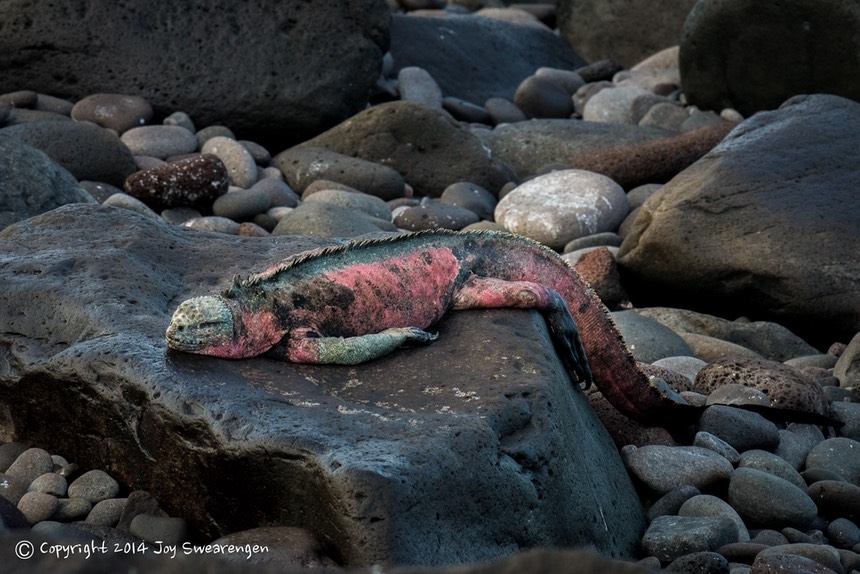
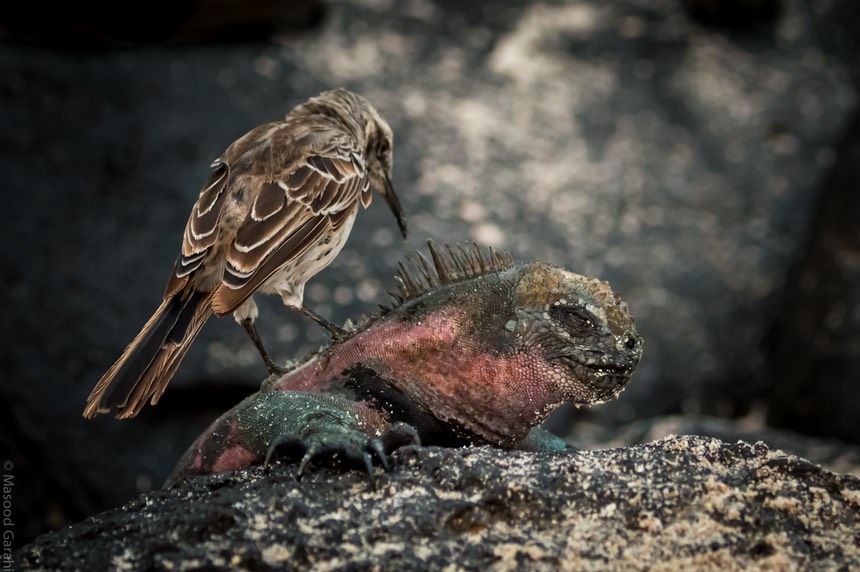

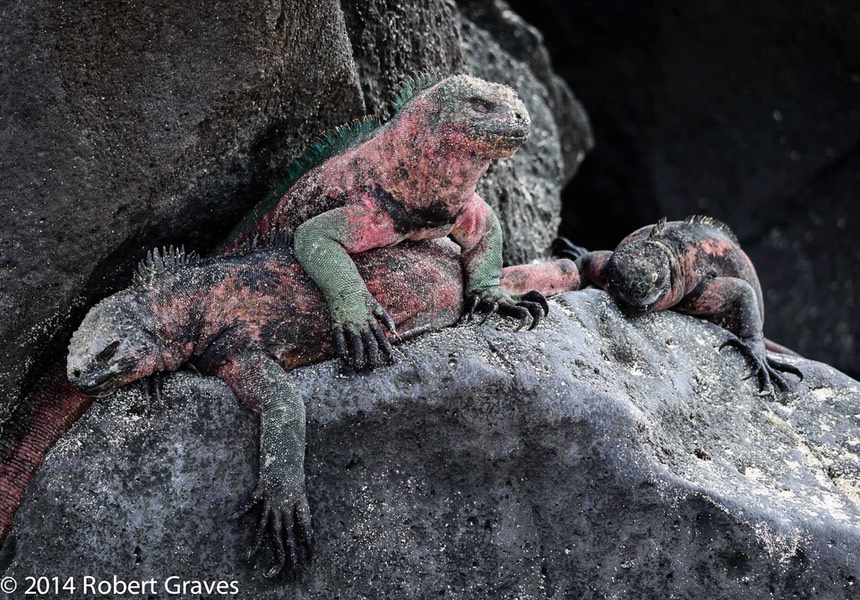
Other early excitement came from lots of playful sea lions, mating doves, the endemic lava lizard that’s rather large, plus some additional birds, such as the Espanola-endemic Mockingbird (slightly bigger and different than its cousins we’ve been seeing).

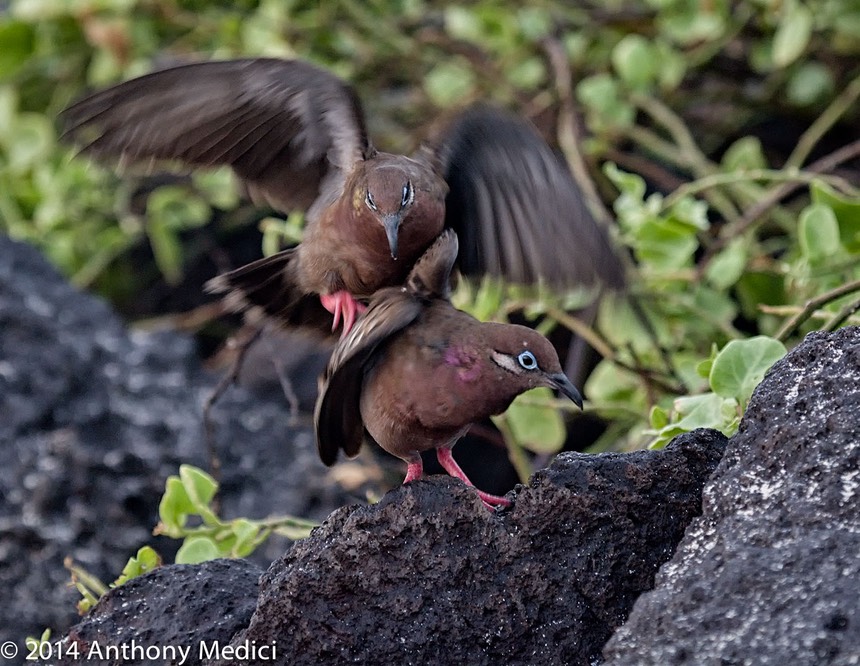

We decided to split into “fast” and “slow” groups this morning. The “slow” group was away from the boat for over four hours. That should tell you something about our day at Suarez.
Nesting Nazca boobies on the trail. The blow-hole near the end of the trail. Female iguanas digging nests for the eggs, also on the trail. Galapagos hawks battling for territory.
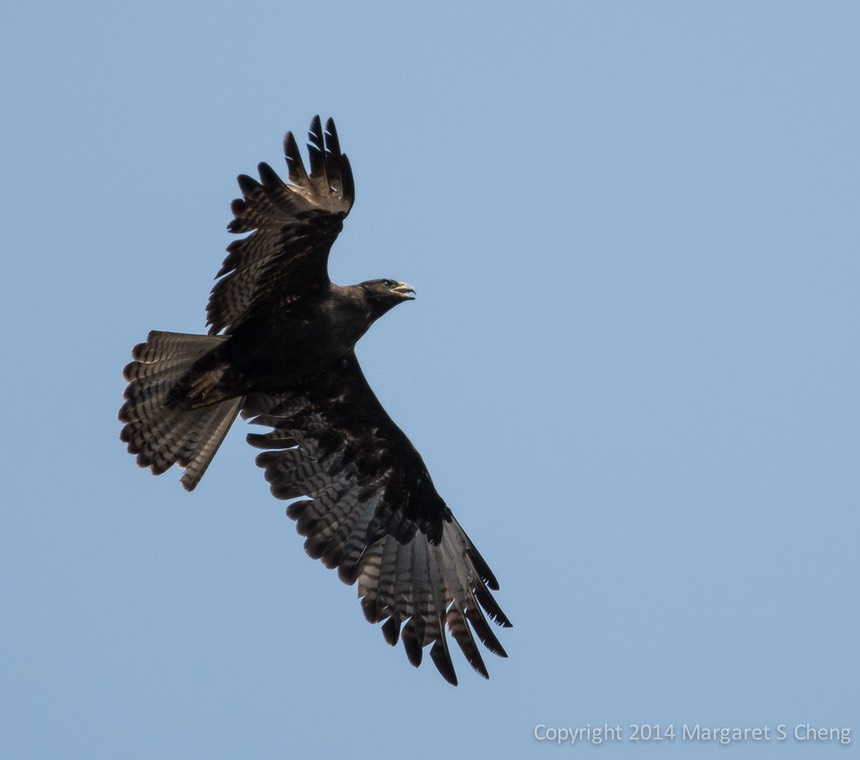
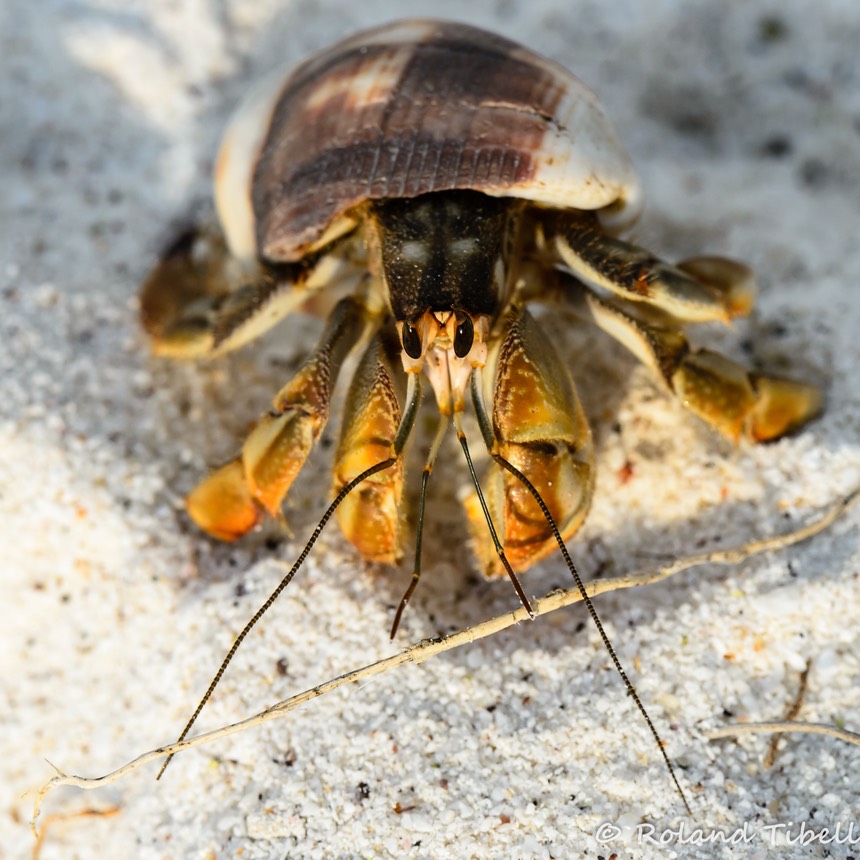
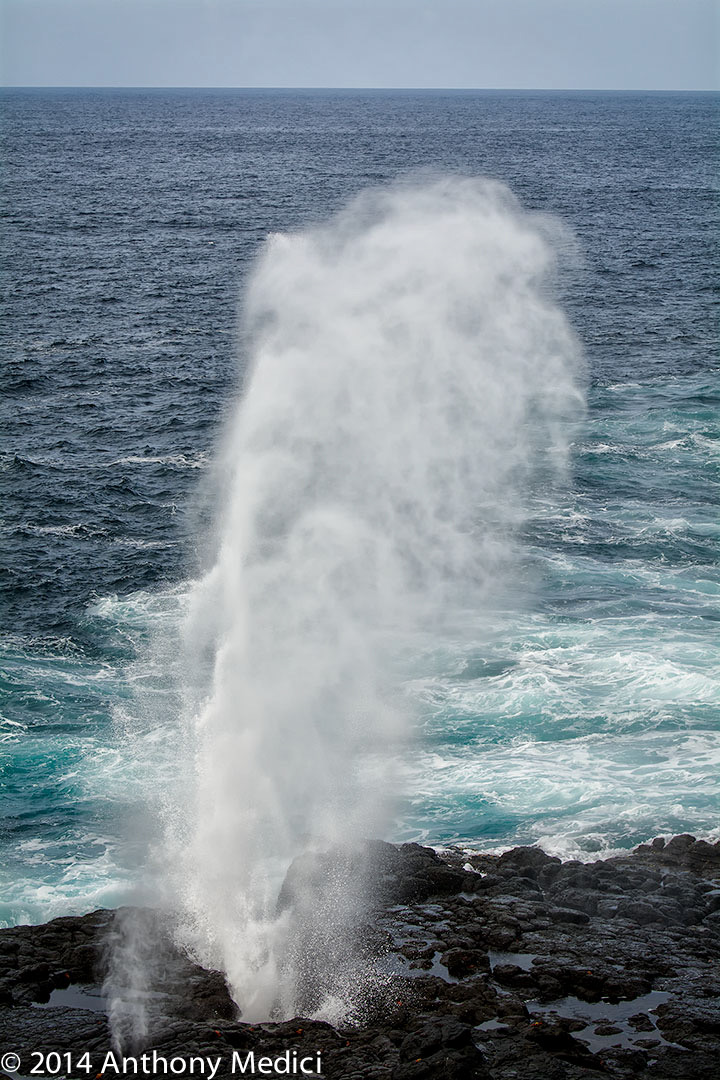

But the highlight of the morning was certainly the Waved Albatross. Two weeks ago, our guide says he saw exactly one albatross. Not only did we see many of them, we saw eggs, fights, courting, taking off, landing, and lots and lots of cliff soaring. These big, elegant birds only come to land here at Punta Suarez, and they are only here the short time that they’re courting and mating. Juveniles spend their first six years over the ocean, and albatross are one of those birds that can sleep while flying. We apparently hit just as most of the birds were coming back to the island and going through their mating rituals, though at least one of them had been there awhile judging from what we found on the trail:


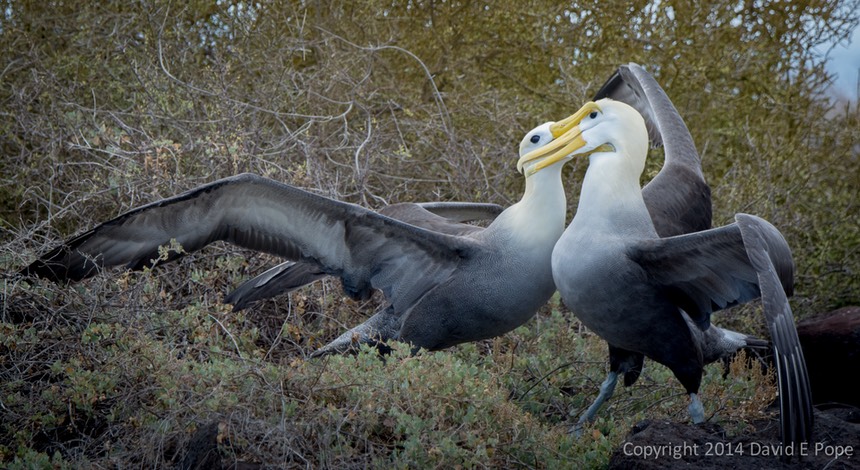
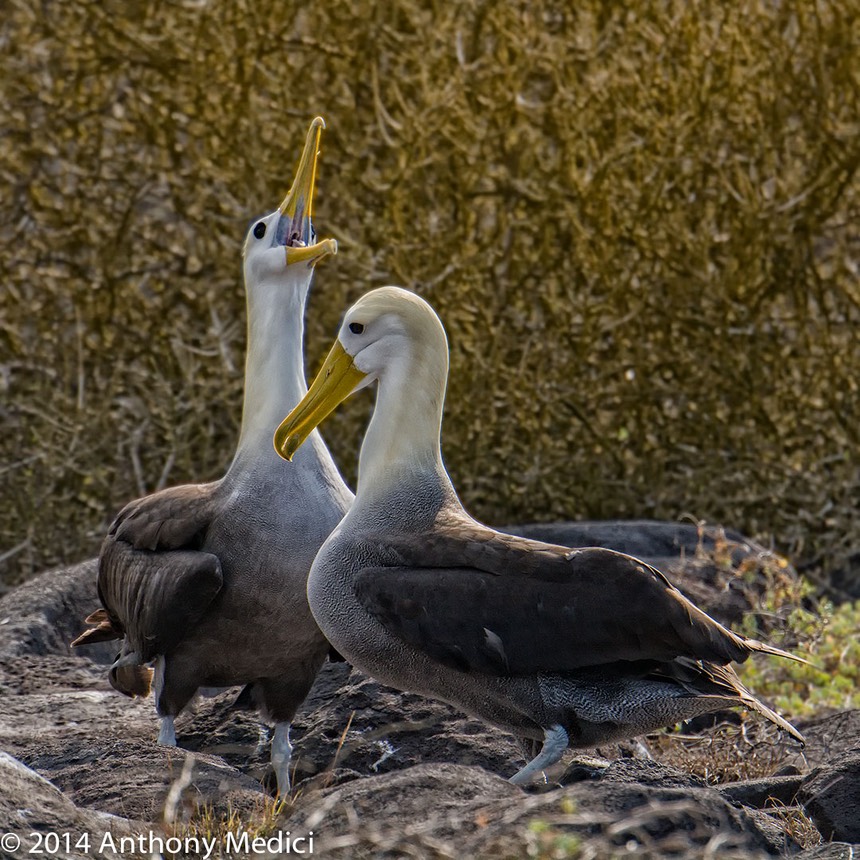
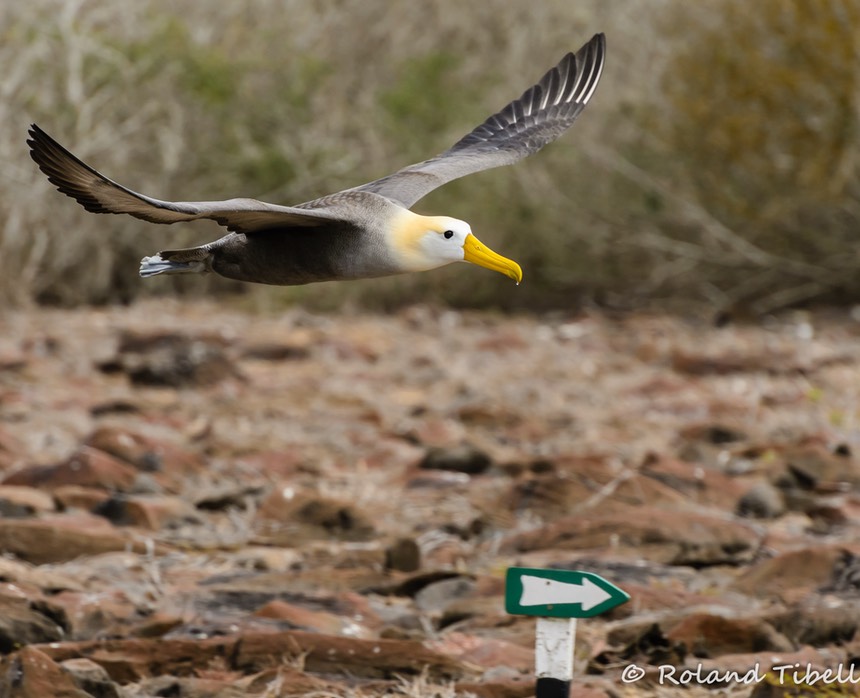


Punta Suarez fast turned into a focus and buffer testing site for our two groups. Even I spent a lot of time photographing the albatross and filling my buffer.
Once we were back on the boat, the captain moved the boat from the Western edge of Espanola to Gardiner Bay on the Eastern side. Our afternoon schedule is snorkeling with sea turtles, kayaking, and finally another beach combing expedition on the white sands of Gardiner.
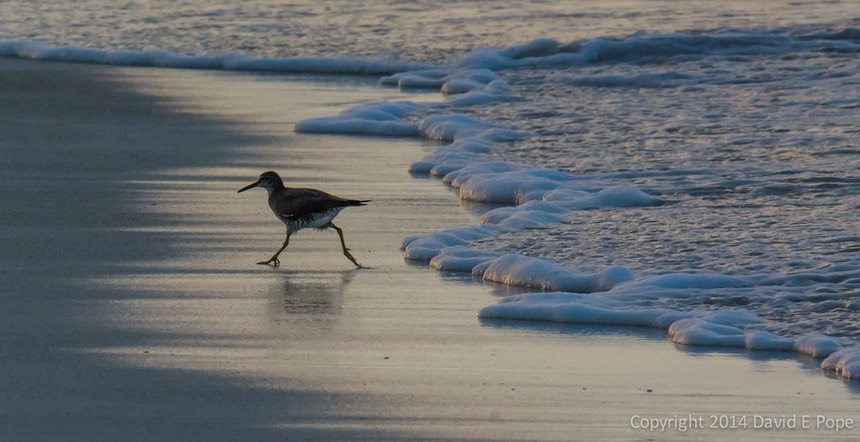

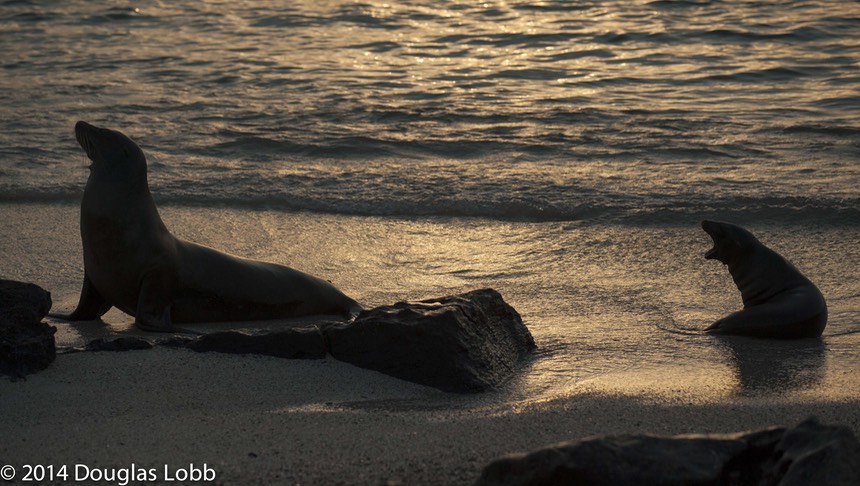
Landings: Punta Suarez is a dry landing, though the rock dock can be wet from wave action; Gardiner is a wet landing.
Significant New Sightings: Albatross, albatross eggs, albatross mating rituals; the blow hole.
